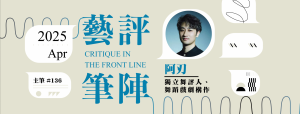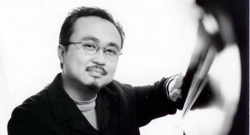Dang Thai Son, laureate of the 10th International Fryderyk Chopin Piano Competition, performed in Hong Kong City Hall on 26th May 2018, with a programme consisting of works by Schubert, Chopin, Paderewski and Liszt.
The concert commenced with Schubert Allegretto in C minor, D.915. The opening statement was phrased and crafted beautifully. The dynamic shadings (such as in bar 5) were also handled convincingly, with chords in bars 27 and 28 well-balanced and voiced carefully. Dang took a relatively slow pace in this piece, but the forward momentum was still retained and some nostalgia was conveyed. The first section was performed with finger legato with very limited use of pedal. Throughout the piece, the dynamic markings notated on the score were followed strictly. However, the pianist’s approach to this work was a bit cautious, and the elements were not tightly connected in an organic way.
It was then followed by Schubert 12 German Dances, D.790, which contained quite some luscious moments. Each dance was given a clear and unique character under Dang’s hands; and the simplicity of the dance form itself was never compromised despite the complex harmonies. No.1 was played gently and with a lively sense of pace and flow like a zephyr. No.2 and No.4 were given the rhythmic drive necessary for the music to come to life. The harmonic modulations in No.5 had been tackled with great care and conjured up deep emotions. No.7 was performed with a sense of lingering, and No.8 was a perfect combination of optimism, remorse and sentiment. The whole set of German Dances were played with grace and elegance, but the tonal and dynamic range, here, was somewhat restricted.
The pianist seemed more at ease when it came to Chopin’s compositions, which he has been famous for. The concert proceeded to Chopin Barcarolle in F-sharp, Op.60. After the majestic yet mysterious introduction, the lilting motion of the gondola was very effectively depicted by the wavelike motion in the left hand within a flowing metre. The melody in right hand was projected with bel canto, contributing to the lyrical quality of the music. Musicologically speaking, this work was Chopin’s farewell to the world, and all the remembrances and reminiscences were lucidly presented in the bittersweet music in Dang’s interpretation. The technical difficulties – double third trills, sixths, octaves – were overcome effortlessly. There were sporadic slips, but they did not impede artistic communication and delivery. Nevertheless, the climax (Più mosso section) was a bit rushed. If this section was taken at a slower tempo, the music can really breath and the conflicting emotions in the music – ecstasy and ache – can be expressed more effectively and stir the audience’s emotions, adding more “weight” to the music. The runs were, on the other hand, played with a high level of clarity, delicacy and fluency, and leggiero, as what the composer asked for.
The first half of the programme was concluded by Chopin Andante spianato et grande polonaise brillante, Op.22. Andante spianato was started with gentleness and peace, and again with right hand bringing out the melody with bel canto, displaying poetical quality. The rippling emotions were conveyed effectively through the harmonic modulations. The inner voices were brought out meticulously, with a pleasing balance between voices. Individual voices in the chordal section had much clarity. The Polonaise started with calls from French horn, which were well imitated, with a wide palette of orchestral colours created from the piano subsequently in the introduction. The technical brilliance was evidenced by the high level of fluidity and confidently done, sparkling embellishment in the right hand, while maintaining absolute legato and filigree. The runs, such as that at bars 249-258, and the fioriture, such as that at bars 205-206, were treated with leggiero and clear articulation. It was such a pity that the chromatic progressions in the coda (bars 261-268) were rushed and blurred with overpedalling. Nonetheless, the lively character, grandeur and sense of excitement was naturally brought out by the exploration of different sonorities, a wide range of tonal colours and a strong sense of pulse. Each phrase was carefully thought out, without losing any spontaneity. More importantly, the Polish spirit, aristocracy and nobility of Chopin’s music had been successfully captured.
When compared to Dang’s performance of this work in 1980 Chopin Competition, it is immediately apparent that the performance here was even more mature, in terms of artistic delivery, technical versatility and musical understanding, with a more generous supply of pedalling but without blurring out melodic line for most of the time.
After the intermission, here came an enticing selection of works by Ignacy Jan Paderewski, a Polish composer and former Prime Minister of Poland. Paderewski’s works are noted for their aristocratic quality and romanticism. The second half of the programme began with Mélodie in G-flat, Op.16 No.2. Sonorous and lyrical, Dang’s performance avoided over-indulgence in the warmth of the music. The melodic line was sung beautifully and Dang allowed the music to unravel itself. It was followed by Légende in A-flat, Op.16 No.1. This piece was presented with a sense of melodrama and intimacy. The climax had impassioned rigour and did not sound forced. There was, however, a slight tendency to rush at the climax. Here came Nocturne in B-flat, Op.16 No.4. In this highly reflective and sincere rendition of such a romantic yet sentimental piece with regretful feelings, the surge and drop of emotions was displayed in a restrained and heartbreakingly beautiful way. Dang pulled off a tremendously moving interpretation and created imagery in the music – gazing at the starry night, thinking of the distant him or her, reminiscing about the past. Dang then proceeded to Minuet in G major, Op.14 No.1, which illustrated his mastery of rubato. The flourishes were smoothly tackled with spontaneity and nobility. It was then Krakowiak in B-flat, Op.5 No.3. As its name hinted, this dance form originated from Krakow in Poland. The introduction was given appropriate attenuation and its seeming awkwardness was solved, portraying the choreography of the leading dancer. There was some high-spirited playing from Dang, such as at bar 121, though whether Dang followed the marking “pesante” was questionable.
Dang then gave a persuasive account of Liszt Reminiscences de Norma, S.394, in which Liszt utilized thematic materials from Bellini’s opera Norma. The opening statement was made boldly. The performance had good thematic highlighting, which required a very high level of technical command and stamina. In sections with three-handed effect, the inner voice was always clearly enunciated. Basically all the technical demands present in the work – storming octaves, incessant hand-crossing, runs – had been immaculately tackled. The performance was successful not only in technical aspect, but also musically, with the sense of architecture and drama. Dang showed that this work is not merely a technical showcase by displaying how the piece is structured and develops gradually.
After the ebullient applause from the audience, the concert was concluded with the second movement (Andante sostenuto) from Schubert Piano Sonata in B-flat, D.960, which was infused with despair, isolation and soberness. The fragile nature of Schubert’s music was successfully captured with transcendental beauty. One feature commonly found in Schubert’s works – sections in major keys being even more sentimental than the ones in minor keys – was also evident under Dang’s controlled yet emotional playing. This encore provided a fitting end to the recital, where the audience applauded only after a short period of absolute silence.
Dang Thai Son’s playing is always technically assured, but unlike some pianists of the younger generation, his technique does not exist for the sake of virtuosity, but serves as a servant to the music itself. His performance has transcended beyond technical level, where the performer serves as a bridge between the composers and the audience; and technique becomes a “tool” for the artist to fully transmit composers’ thoughts. Young performers should reflect upon this, since after all, it is what music-making is about.
本網站內一切內容之版權均屬國際演藝評論家協會(香港分會)及原作者所有,未經本會及/或原作者書面同意,不得轉載。










